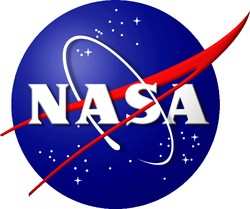Mon, Feb 13, 2012
Agency Seeks Replacement For Toxic Hydrazine
NASA is seeking technology demonstration proposals for green
propellant alternatives to the highly toxic fuel hydrazine. As NASA
works with American companies to open a new era of access to space,
the agency seeks innovative and transformative fuels that are less
harmful to our environment.

Hydrazine is an efficient and ubiquitous propellant that can be
stored for long periods of time, but is also highly corrosive and
toxic. It is used extensively on commercial and defense department
satellites as well as for NASA science and exploration missions.
NASA is looking for an alternative that decreases environmental
hazards and pollutants, has fewer operational hazards and shortens
rocket launch processing times.
"High performance green propulsion has the potential to
significantly change how we travel in space," said Michael Gazarik,
director of NASA's Space Technology Program at the agency's
headquarters in Washington. "NASA's Space Technology Program seeks
out these sort of cross-cutting, innovative technologies to enable
our future missions while also providing benefit to the American
space industry. By reducing the hazards of handling fuel, we can
reduce ground processing time and lower costs for rocket launches,
allowing a greater community of researchers and technologists
access to the high frontier."
Beyond decreasing environmental hazards and pollutants,
promising aspects of green propellants also include reduced systems
complexity, fewer operational hazards, decreased launch processing
times and increased propellant performance.
Maturing a space technology, such as green propellants, to
mission readiness through relevant environment testing and
demonstration is a significant challenge from a cost, schedule and
risk perspective. NASA has established the Technology Demonstration
Missions Program to perform this function, bridging the gap between
laboratory confirmation of a technology and its initial use on an
operational mission.
NASA anticipates making one or more awards in response to this
solicitation, with no single award exceeding $50 million. Final
awards will be made based on the strength of proposals and
availability of funds. The deadline for submitting proposals is
April 30.
More News
Also: New Lakeland Fly-in!, Gleim's DPE, MOSAIC! Nearly three-quarters of a century in the making, EAA is excited about the future… especially with the potential of a MOSAIC>[...]
Estimated (EST) -When used in NOTAMs “EST” is a contraction that is used by the issuing authority only when the condition is expected to return to service prior to the >[...]
Aero Linx: Regional Airline Association (RAA) Regional airlines provide critical links connecting communities throughout North America to the national and international air transpo>[...]
The Airplane Broke Up In Flight And Descended To The Ground. The Debris Path Extended For About 1,435 Ft. Analysis: The pilot, who was the owner and builder of the experimental, am>[...]
From 2015 (YouTube version): History Comes Alive Thanks to A Magnificent CAF Effort The story of the Douglas C-47 named, “That’s all Brother,” is fascinating from>[...]
 Airborne 07.21.25: Nighthawk!, Hartzell Expands, Deltahawk 350HP!
Airborne 07.21.25: Nighthawk!, Hartzell Expands, Deltahawk 350HP! ANN's Daily Aero-Term (07.27.25): Estimated (EST)
ANN's Daily Aero-Term (07.27.25): Estimated (EST) ANN's Daily Aero-Linx (07.27.25)
ANN's Daily Aero-Linx (07.27.25) NTSB Final Report: Luce Buttercup
NTSB Final Report: Luce Buttercup Classic Aero-TV: 'That's All Brother'-Restoring a True Piece of Military History
Classic Aero-TV: 'That's All Brother'-Restoring a True Piece of Military History



